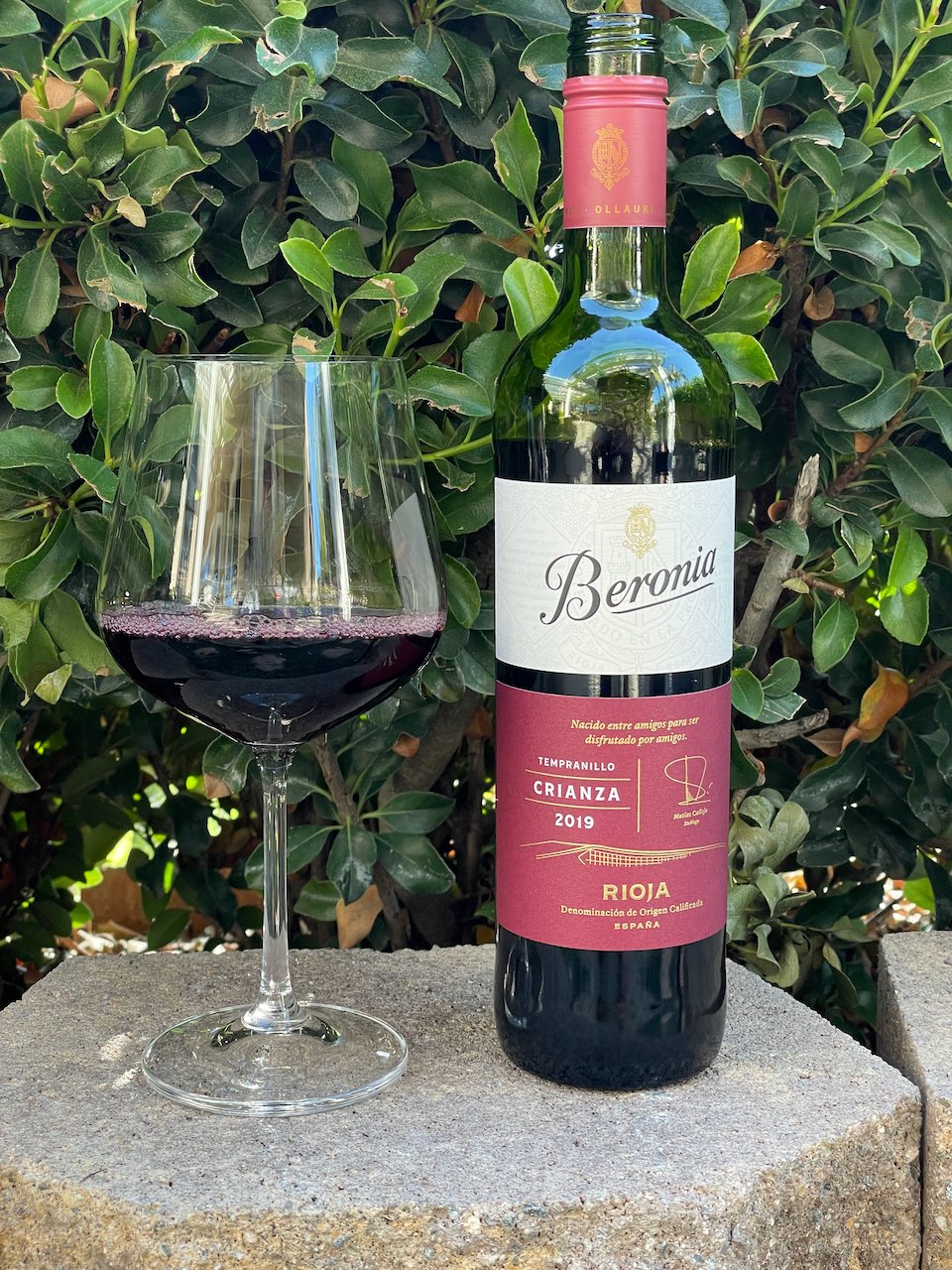2019 Beronia Crianza ($14.99)
This Beronia Crianza, from the Rioja region of Spain. Their innovative nature led them to pioneer the use of mixed oak barrels, a combination of American oak staves and French oak ends. The marriage of the two results adds a unique combination of complex aromas and flavors. American oak is widely used throughout Rioja. Hard and almost impermeable, but with a looser grain, it imparts pronounced flavors of vanilla, coconut and sweet spice. The grain of French oak is much finer than its American counterpart, and gives more subtle flavors and toasty, nutty characteristics. French oak also contributes to the soft, silken tannins found in aged red wines.
This Beronia Crianza is made primarily from Tempranillo, along with just a bit of Garnacha and Mazuelo (a.k.a. Carignan). By Rioja regulations, a Crianza (“kree-ahn-tha”) wine must be aged for a total of two years with at least one year in oak barrels. In the case of this wine, it was aged over a year in the mix oak barrels. It was then bottled and left to rest for three months prior to its release.
This wine is medium ruby in color and has nice aromatics including red fruits (cherry and raspberry) and herbal notes. On the palate this Beronia Crianza has big red fruit flavors, medium tannin and a really nice lingering finish with a bit of crisp acidity.
This Beronia Crianza Rioja is imported by González Byass USA and nicely fits as an affordable and attainable Behind the Cork™ wine of the week! Cheers!
Disclosure of Wine Sample Submission: I received this sample at no cost for review. The opinions expressed are entirely my own.
Sample Provided by González Byass via Donna White Communications






